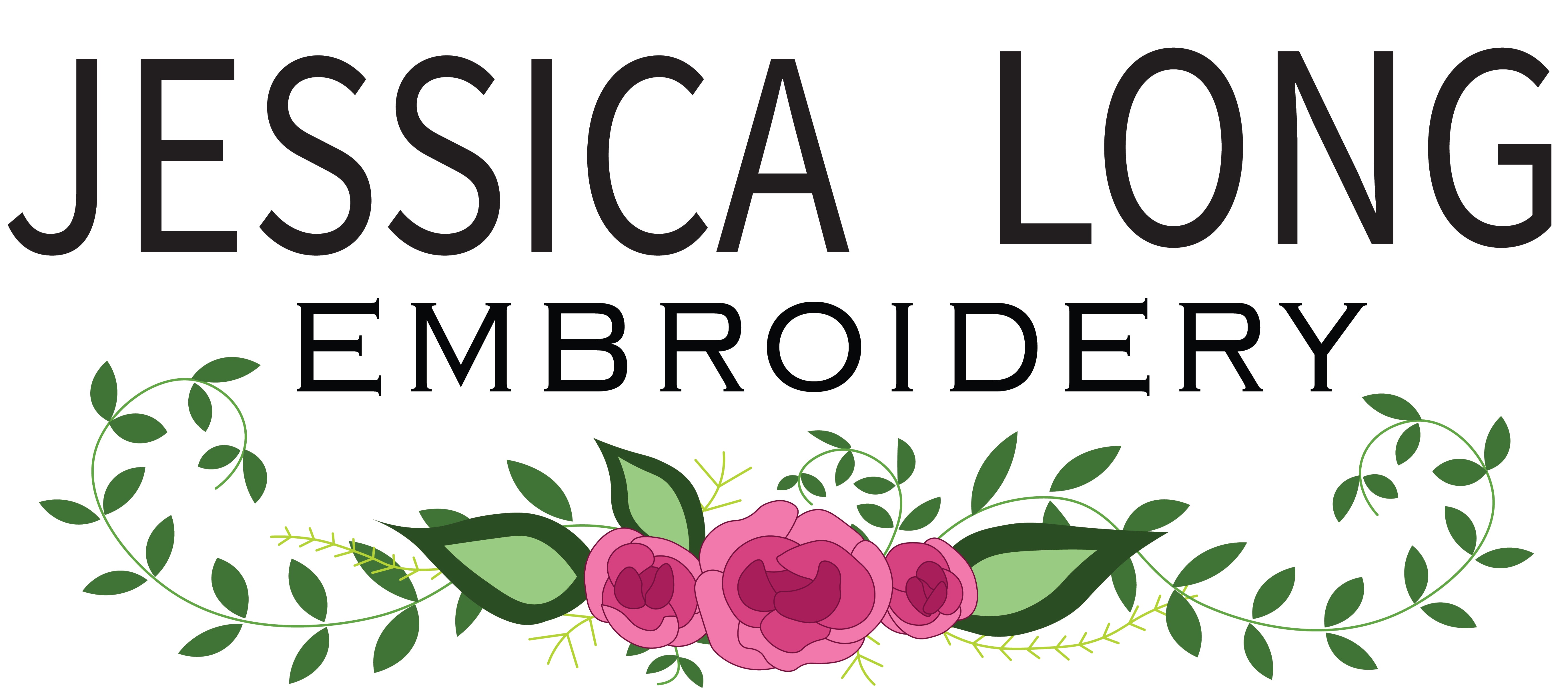A bound hoop can help keep your embroidery fabric drum tight, but the pattern template could still be warped depending on variation in tension on different sides of your hoop. Sometimes this warping is negligible, but when stitching designs with straight lines, text, or other important details, it can help to add a layer of stabilizer to your fabric.
For this architectural embroidery of the National Archives Foundation building it was imperative to use a fabric stabilizer. Without the extra stabilization the straight lines and right angles of the building would be extremely difficult to recreate.

I have been using StitchnSew adhesive embroidery stabilizer from Thermoweb. I love that it does not leave any sticky residue on my needles and that its opacity hides the backside of my stitches from view.
1. Cut a length of stabilizer to match the size of your fabric.
2. Remove the film from the stabilizer and place it sticky side down on the back side of your embroidery fabric. Smooth out any wrinkles and then hoop up the fabric with the stabilizer stuck to the backside.

3. After stitching you can choose to keep the stabilizer in place or rip it away. I prefer to keep the stabilizer attached to my finished work, trimming it with the excess fabric before using a running stitch to cinch.
Tips:
- Do not fold the stabilizer! It will stay creased.
- If using the light tracing method for pattern transfer be sure to trace the template to the fabric before adding the stabilizer. The stabilizer is opaque and will block light.
- Thermoweb suggests using this stabilizer without a hoop. I prefer to still use a hoop as I find it easier to hold my work hooped up. If you do not plan to frame your embroidery in the hoop (same size as stitching hoop or smaller) DO NOT stitch in a hoop.
Here is a look at two cuts of the same fabric after hooping. Fabric A has stabilizer on the back. Fabric B has no stabilizer and was secured in a bound hoop.

